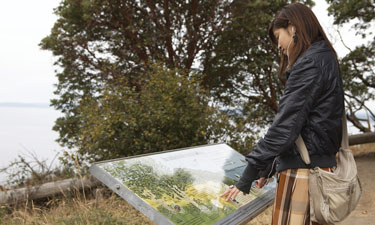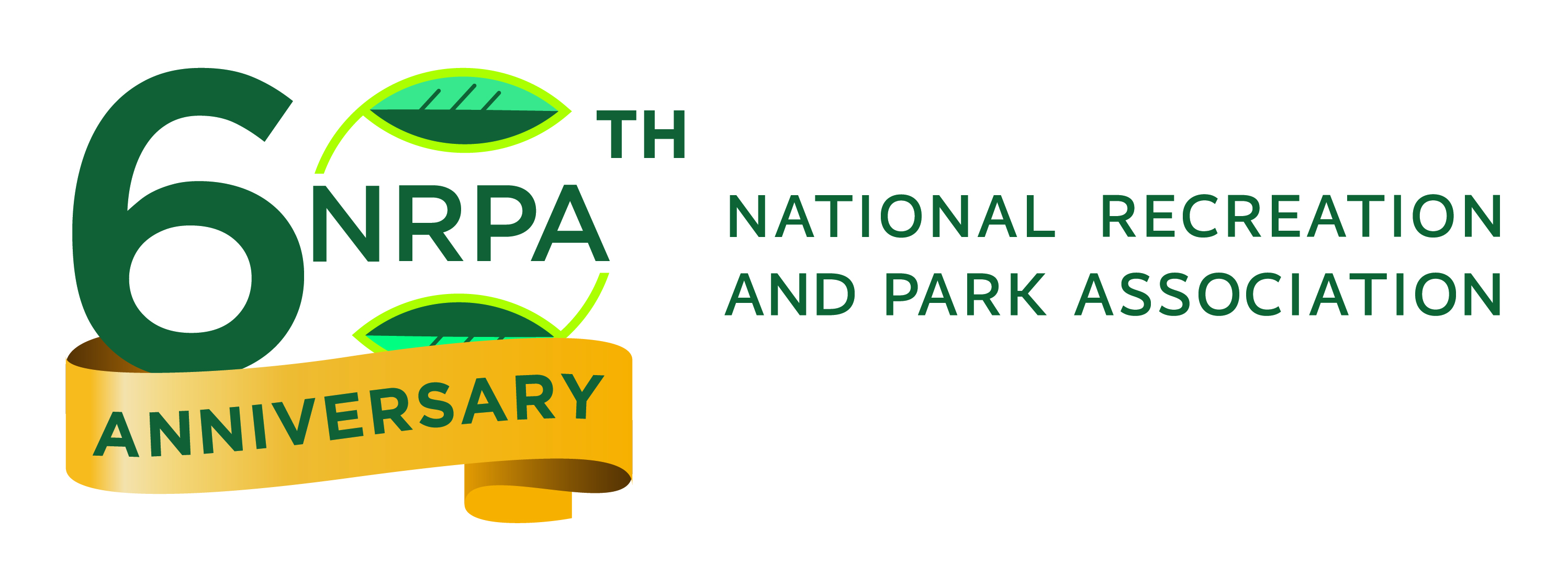 A good park signage system performs multiple functions: it provides information and directions for people to find their way around the park, encourages learning experiences, helps maintain the image of the park and communicates park rules. Signs can meet specific needs, target certain areas and, at the same time, be kept to a minimum in the park as a whole. They can also provide a sense of place and local pride by incorporating the history of a specific site in the overall design. Here, we review some basic tips for developing signage at your park facilities.
A good park signage system performs multiple functions: it provides information and directions for people to find their way around the park, encourages learning experiences, helps maintain the image of the park and communicates park rules. Signs can meet specific needs, target certain areas and, at the same time, be kept to a minimum in the park as a whole. They can also provide a sense of place and local pride by incorporating the history of a specific site in the overall design. Here, we review some basic tips for developing signage at your park facilities.
Clarify Your Goals
First, decide the goals and purposes for the signage system you want to develop. Determine what you want the signage to do, who it will serve and the kind of information you want to communicate.
This process should begin with a survey of the existing signage conditions in the park. That survey may include reviewing existing standards and guidelines; conducting evaluation studies; interviewing park staff concerning information relevant to the park and region; surveying existing signage in terms of its types, condition and relation to local topography and conditions; and examining incident and accident records to determine what special signage needs may be relevant to develop. Savvy designers can build on what already exists, using sign designs or placements that work well and improving on those that don’t. Using existing elements or variations on those elements can also help to build users’ familiarity with signs and their meanings.
It is also important to understand and fully evaluate any issues, problem areas and perceived decision points along a park visitor’s paths into and through a facility. Talk to people about areas they find difficult to locate or navigate. Make observations of different types of visitors (e.g., the elderly, children, families, ability level, etc.) in order to get an idea of the way other people make decisions and how they enter and move through a park. Consider the needs of special groups such as children at stroller height, as well as those who travel through the park by wheelchair, motorized scooter or bicycle. Interview park staff about information-related problems they have noticed, including staff-visitor conflicts (such as activities that visitors like to engage in that may conflict with park maintenance or goals), conflicts between types of visitors, vandalism, recurring problems and questions, sponsored programs and activities, and park staff information needs.
Unique historical aspects of a park and surrounding areas contribute to a sense of place, nurture local pride and stimulate learning about the place. Such information can help to inform signage goals, determine who your visitor audiences are, and set the tone of the message you want to send.
Once the essential signage elements are identified, it’s important to develop a comprehensive master plan for the overall informational system to include signs that are informational, directional or help people to orient themselves and, possibly, identify particular park places. The master plan incorporates the guidelines and information you have collected and lays out the types of signage needed, their text and symbols.
Types of Park Signage
Different types of signage serve different purposes — park maps, information or bulletin boards, educational signs and directional signs are the most common examples. The placement of such signage is also an important consideration — adding signage in conjunction with other park amenities, like benches, cafés, restrooms and places where paths cross, can create mini-destinations or meeting places in the park.
Park Maps: Maps at park entrances, within the boundaries of the park and along set distances of pathways can help to increase and enhance park users’ knowledge, curiosity and interest about the park. Maps not only help visitors guide and direct themselves through the park, but highlight places of interest to visit as well. Useful park maps include the entire park, marked with boundaries and approximate street connections, trails, concessions and place of posting located clearly (“You are here”). An enlarged map section of the particular area of posting with areas of interest is also useful.
Information/Bulletin Boards: Often, park visitors are familiar with one or more sections of a park that they frequent but are not familiar with the breadth of a park and its facilities. In addition, visitors are often uninformed about tournaments, park events and activities, and renovation or management plans. Enclosed information/bulletin boards can serve as an outreach tool to better inform visitors about the park.
Educational/Interpretive Signs: Educational signs, such as those that highlight specific trees, paths, flowers or other elements of the natural environment, can also be conceived as a fun way to engage people with the natural environment.
Directional Signs: Directional signs posted intermittently, especially in natural areas, help people keep their bearings and feel secure.
Test, Experiment and Evaluate
Once your new signage plan is in place, follow up with evaluations to see if it is effective. Experiment with how the messages are phrased, how the signs are designed and where the signs are located as a way to determine the most effective signage. The success of your sign plan should be judged with the goals and purposes that you developed in mind, as well as the general program guidelines and goals of your agency. With a well-developed, thoughtful signage plan, park visitors of all ages and ability levels are more likely to enjoy navigating the many paths, playgrounds, fields and forests waiting to be explored.
This article is lightly edited and reprinted with permission from the Project for Public Spaces (PPS), a nonprofit planning, design and educational organization dedicated to helping people create and sustain public spaces that build stronger communities.
Seeking Signage?
The right vendor can be a big help as you explore signage options — below, find contact details for a handful of proven manufacturers with deep experience in the field of parks and recreation.
2526 Charter Oak Dr., Ste. 100
Temple, TX 76502
888.464.9663
P.O. Box 8670
Madison, WI 53708
877.686.8565
948 Sherren St. West
Roseville, MN 55113
651.487.3100
345 Oak Road
Gibsonia, PA 15044
800.544.8428
10460 Roosevelt Blvd. #295
St. Petersburg, FL 33716
888.878.0244


